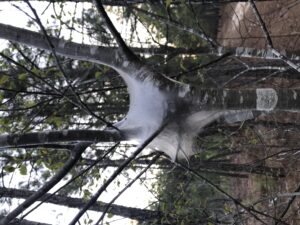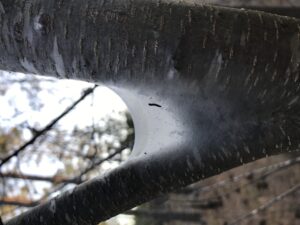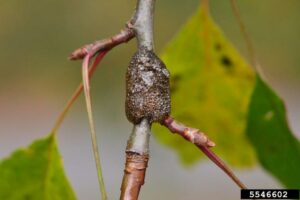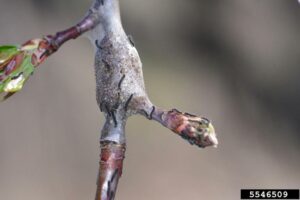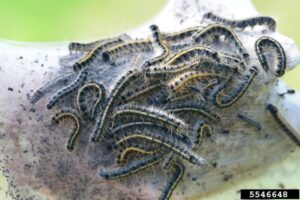The Eastern Tent Caterpillar Emergence
go.ncsu.edu/readext?856092
en Español / em Português
El inglés es el idioma de control de esta página. En la medida en que haya algún conflicto entre la traducción al inglés y la traducción, el inglés prevalece.
Al hacer clic en el enlace de traducción se activa un servicio de traducción gratuito para convertir la página al español. Al igual que con cualquier traducción por Internet, la conversión no es sensible al contexto y puede que no traduzca el texto en su significado original. NC State Extension no garantiza la exactitud del texto traducido. Por favor, tenga en cuenta que algunas aplicaciones y/o servicios pueden no funcionar como se espera cuando se traducen.
Português
Inglês é o idioma de controle desta página. Na medida que haja algum conflito entre o texto original em Inglês e a tradução, o Inglês prevalece.
Ao clicar no link de tradução, um serviço gratuito de tradução será ativado para converter a página para o Português. Como em qualquer tradução pela internet, a conversão não é sensivel ao contexto e pode não ocorrer a tradução para o significado orginal. O serviço de Extensão da Carolina do Norte (NC State Extension) não garante a exatidão do texto traduzido. Por favor, observe que algumas funções ou serviços podem não funcionar como esperado após a tradução.
English
English is the controlling language of this page. To the extent there is any conflict between the English text and the translation, English controls.
Clicking on the translation link activates a free translation service to convert the page to Spanish. As with any Internet translation, the conversion is not context-sensitive and may not translate the text to its original meaning. NC State Extension does not guarantee the accuracy of the translated text. Please note that some applications and/or services may not function as expected when translated.
Collapse ▲While hiking this past weekend in the Sandhills, I noticed many small silken tent nests in the branches of our native black cherry trees (Prunus serotina). On closer inspection, I found tiny little caterpillars in and closely around the nests. Knowing the host plant and the characteristic silken nests, these small caterpillars had to be the eastern tent caterpillar (Malacosoma americanum).
Eastern tent caterpillars overwinter as tiny egg sacks attached to the branches of their host plant. In very early spring, just as their host plant starts to leaf out, eggs hatch into tiny caterpillars barely seen by the naked eye. These tiny caterpillars will build communal silken nests in the crotches of branches. The nests protect caterpillars from poor weather, predators, and unfortunately for us, most insecticide sprays. The caterpillars and their nests will steadily increase in size and noticeability for four to six weeks until the caterpillars finish feeding and disperse to find protected locations to pupate.
Photos by David L. Clement, University of Maryland, Bugwood.org
The primary host plant for the eastern tent caterpillar is the black cherry, a common native tree found throughout the state. Black cherry is particular common along fence rows and at the edge of fields where birds drop cherry seeds. In addition to black cherry, the eastern tent caterpillar commonly feed on apples (Malus domestica), crabapples (Malus spp.), and ornamental cherries (Prunus spp.). They will occasionally feed on other closely related trees, particularly if the population of eastern tent caterpillars is high. Eastern tent caterpillars will sometimes defoliate trees when caterpillar populations are high. However, healthy trees will easily recover from this defoliation and put out new leaves.
Eastern tent caterpillars are occasionally confused with the fall webworm (Hyphantria cunea) which makes similar looking nests but whose nest are located in the ends of branches. While eastern tent caterpillars have one generation and build nests in spring, the fall webworm has two generations and are usually most noticeable in the fall. Fall webworms feed on numerous species of trees but is most noticeable in pecan (Carya illinoinensis) trees within our area. Though easily distinguished by sight, both eastern tent caterpillars and fall webworms are often called bagworms which is an entirely different family (Psychidae) of caterpillars that builds camouflaged solitary nests on numerous plant species.
Many of us are most interested in how to control these nest forming caterpillars. While eastern tent caterpillars are rarely damaging to trees, their nests and the defoliation they cause can be very unsightly. The silken nests of tent caterpillars, webworms, and bagworms are very effective at protecting caterpillars from insecticides. A common, but potentially very dangerous control is that of burning nests. This often causes extensive damage to the tree itself and can be very dangerous as well. Tent caterpillars and webworms can be managed by tearing the nest open with a stick or pruners. Without their protective nests, many birds and other predators will feast on the caterpillars. Any portion of the nest or its contents that make it to the ground can be stomped on for incredibly effective pest control.




